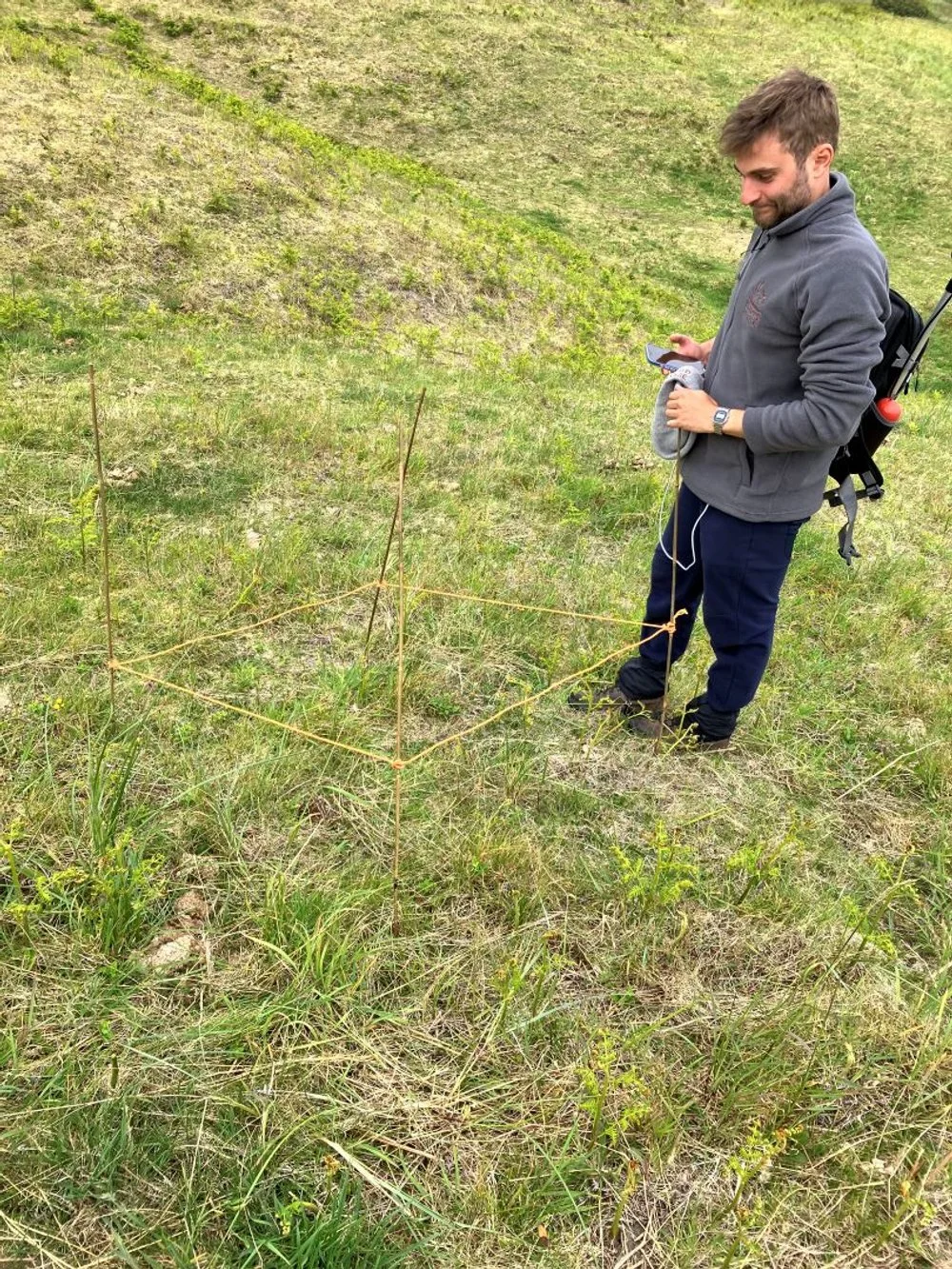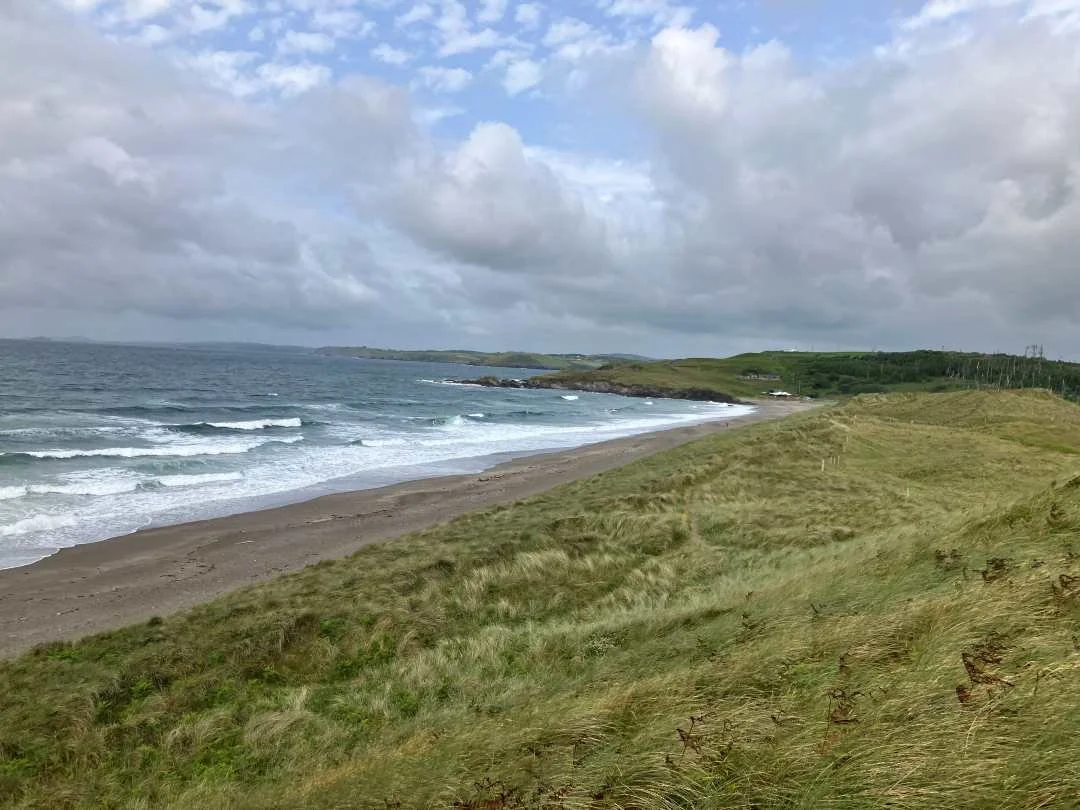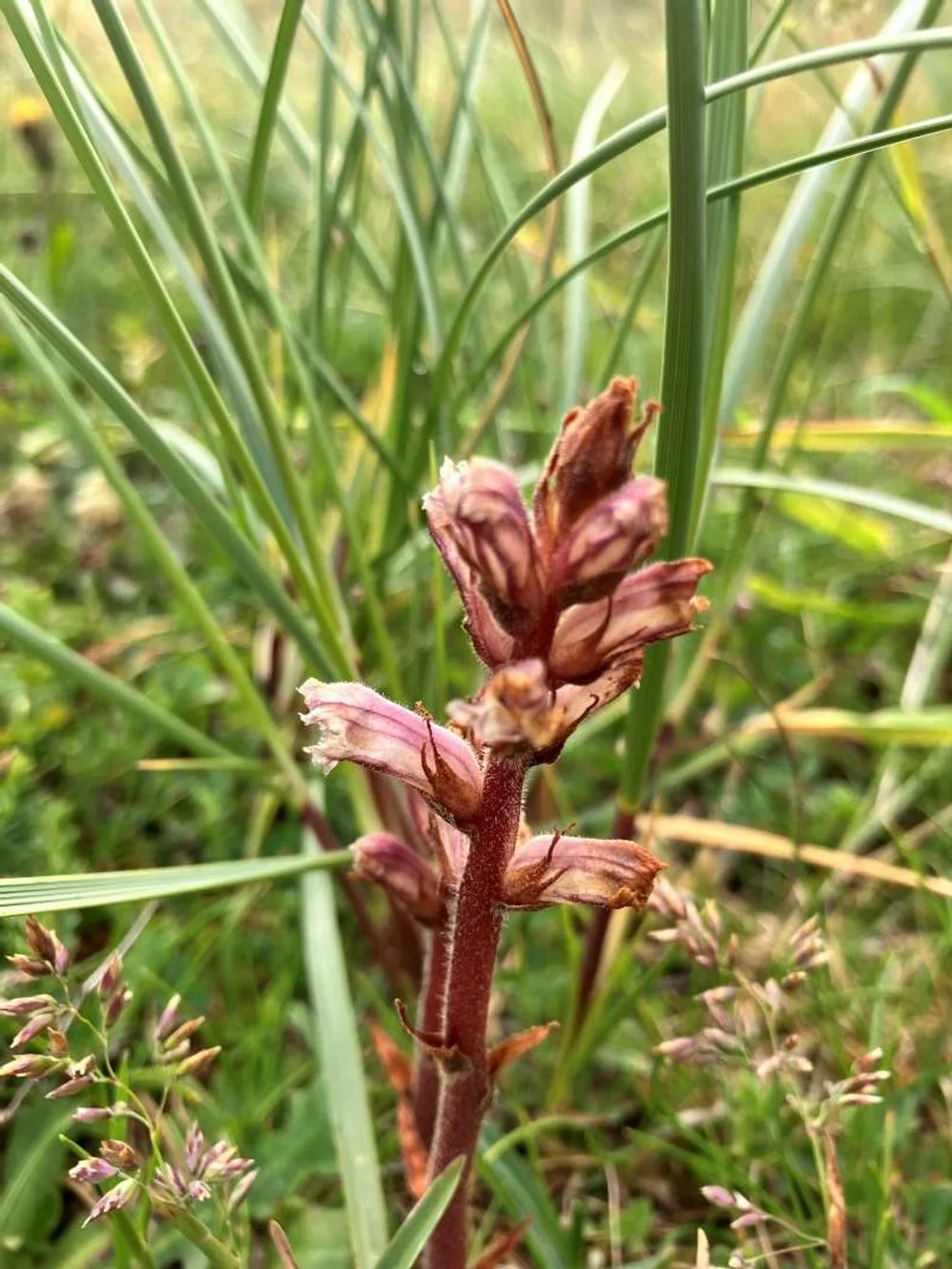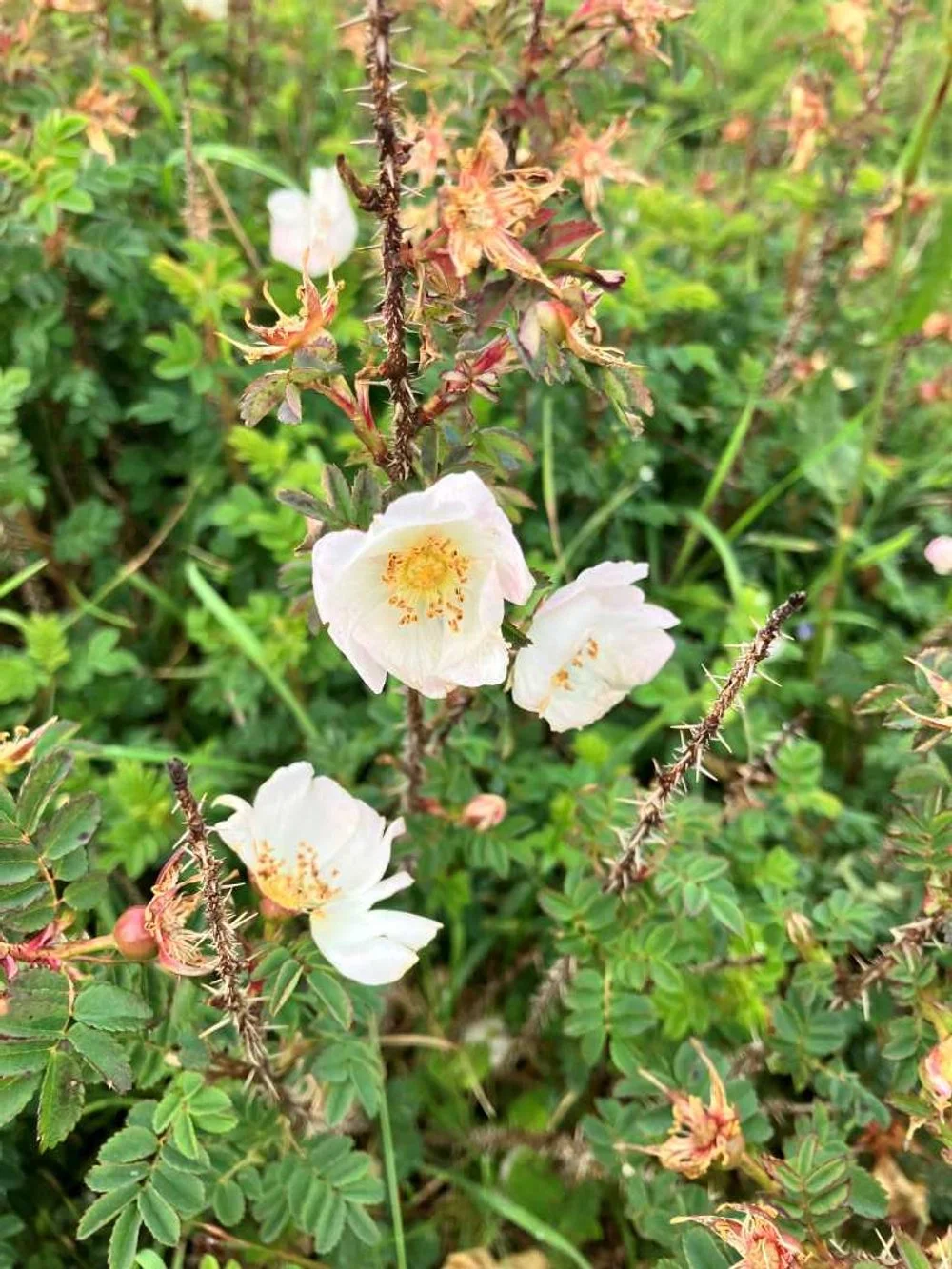Exploring Ireland’s Dunes: A Delicate Habitat in Bloom
This week, some of our team were lucky to spend a few days surveying sand dunes — one of Ireland’s most fragile and fascinating coastal habitats.
In the June sunshine, the dunes were alive with colour and biodiversity. We spotted beautiful dune species in bloom including Burnet Rose, Kidney vetch, Sea bindweed, Lady’s bedstraw, Germander speedwell and Bird’s-foot-trefoil.
One of the more unusual finds was Common Broomrape, a parasitic plant that lives off the roots of other species — likely Bird’s-foot-trefoil in this case. Because Broomrape doesn’t photosynthesise, it has no green leaves or stems. Instead, its stem is a striking brown and its leaves are reduced to tiny scale-like structures. These subtle but specialist adaptations remind us just how unique dune flora can be.
If you’re heading to the coast this summer, please remember that dunes are incredibly sensitive to disturbance. Stick to existing paths to avoid damaging the plant life that holds them together. Dune erosion is a growing issue, but we can all help by treading lightly.
Protecting dunes isn’t just about saving rare plants — it’s about preserving natural coastal defences and nurturing habitats that support a wealth of biodiversity.







